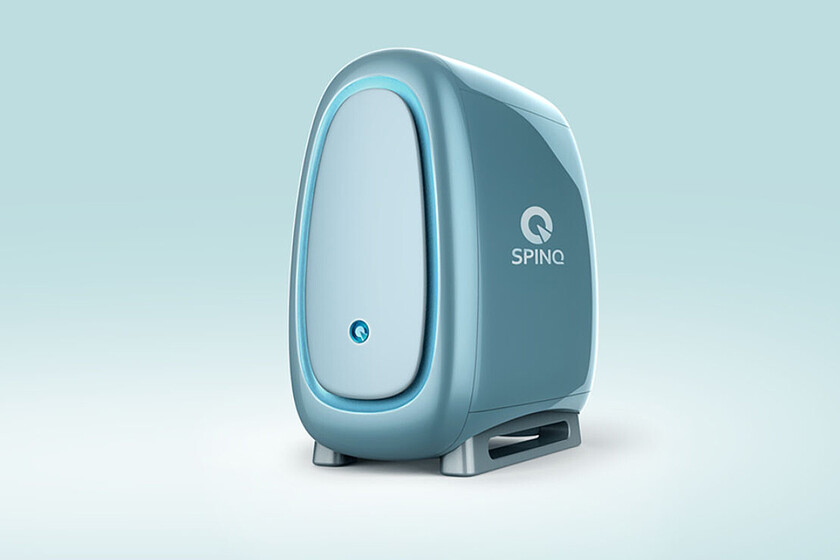Verdict
The RedMagic 10 Air offers a lighter and more affordable alternative to RedMagic’s usual gaming behemoths. It can’t quite perform like its actively-cooled siblings, but it’s still more than powerful enough to run the most demanding games. If you want top performance without the flagship price tag, this one’s hard to beat.
-
Much lighter than the 10 Pro -
IP54 rated -
Beautiful uninterrupted screen -
Excellent performance for the money
-
No headphone socket -
Gets hot with heavy workloads -
Cameras aren’t the best
Key Features
-
Review Price: £439 -
Slimmer and lighter design
RedMagic phones have always been bulky and heavy because they’re more focused on gaming performance than portability. The 10 Air shakes things up, and it’s noticeably lighter than its Pro sibling. -
IP54 dust and water resistance
Most RedMagic phones have an active cooling fan, which means they need vent holes, so they’re not water resistant. The 10 Air does away with the fan, and gets an IP54 rating for water and dust resistance instead. -
Serious performance for the money
The RedMagic 10 Air costs just £439/$549, and it comes with the top-performing chip from last year, the Snapdragon 8 Gen 3. If you want to game at a high level without breaking the bank, this might be the one for you.
Introduction
RedMagic’s gaming phones consistently offer some of the best performance on the market, and they do so at relatively affordable upper mid-range prices. The brand has cemented itself as a top pick for mobile gamers who want bang for their buck.
Until now, though, there wasn’t really any variety to RedMagic’s lineup. This meant that if you were looking for something a little more budget-friendly or less bulky, you’d need to look elsewhere.
With the introduction of the RedMagic 10 Air, that changes. This model starts at just £439 / $549. It’s lighter, slimmer, and it has an IP rating, which is something all recent RedMagic Pro models lack.
However, it’s running the Snapdragon 8 Gen 3, rather than the latest 8 Elite, and there’s no active cooling fan. Is this still a compelling option, or are there too many compromises when picking this phone over the RedMagic 10 Pro? I’ve been playing with it to find out.
Design
- 164.3×76.6×7.85mm, 205g
- Aluminium frame, matte glass back
- IP54 rated
As the name suggests, one of the key features of the RedMagic 10 Air is that it’s slimmer and lighter. Honestly, when I first picked it up, I was a little disappointed. It doesn’t feel much slimmer, it’s still a big and fairly bulky-feeling handset.


However, when I compared it to the most recent RedMagic phone I had to hand, the RedMagic 9S Pro, the difference was immediately apparent. It’s 24 grams lighter, and that makes a big difference in your hand and your pocket. In terms of slimness, though, the difference is less impactful. The difference is just over a millimetre, and you can barely see or feel the change.
You might be wondering how RedMagic managed to shave off so much weight, and the answer is simple: They removed the fan, so this phone is passively cooled like a mainstream flagship.


Obviously that will negatively impact the gaming performance, but it means you get a solid IP54 rating for water and dust resistance – and as already mentioned, it’s a lot lighter.
I have always been nervous using RedMagic phones when the weather is bad. The active cooling system means there are exposed air vents on either side of the phone, and if water gets in those vents, you might need to kiss your phone goodbye.
This model might not rival the latest IP69-rated models, but IP54 resistance is more than enough to keep you protected during the odd rain shower.


There’s another omission that’s worth mentioning, too. There’s no headphone jack on this model. I’m not sure if that was done to increase the water resistance or if it was simply another space and weight-shaving measure, but some gamers are sure to miss it.
My RedMagic 10 Air sample came in the Hailstone colourway, which essentially means it’s white, with silver side rails and one red button. It’s also available in Twilight, which is all black, except for that same red button.
They’re both fairly understated options, but if you’re looking for something flashier, there’s the Flare Edition. It’s not launching until later, likely around June 2025, but it makes much more of a statement. It has an orange and red gradient across the rear panel, with a unique ribbed texture and some of RedMagic’s signature transparent elements.
Of course, no gaming phone is complete without some flashy lighting, and there are some LEDs present on this phone, too. They’re basically the same as the RGB LEDs that are usually placed on the fan, but there’s no fan. They’re positioned in what looks like the uppermost camera lens, but it’s actually a combination camera flash and accent light.


As for the effects, there’s more than enough to play with. You can select up to three colours to display at once, and then they can illuminate consistently, flash or breathe in synchronisation. There’s also a flow option, which illuminates one LED at a time.
These can be set to activate when you get a notification or a call, while gaming or watching media, or just be on all the time, if you hate your battery. Of course, you can turn them off entirely if RGB isn’t your vibe.
The box includes a rather unique case. It’s a frosted semi-transparent case with a ribbed texture, like privacy glass or a lenticular lens. It reminds me of the default wallpapers on a Nothing phone and also looks a bit like my conservatory roof. Obviously, one of those things has more street cred than the other.


I’m sure it won’t be to everyone’s taste, but I quite like it. It feels lovely and velvety, and it’s far less scratch-prone than RedMagic’s usual transparent acrylic cases.
Screen
- 6.8-inch 120Hz 1116×2480 OLED
- Full-screen uninterrupted display
- 1600 nits peak brightness
The display on the RedMagic 10 Air is very slightly smaller than the RedMagic 10 Pro, but we’re talking half an inch here. For all intents and purposes, it feels almost identical.
You still get a fully uninterrupted display, with no notch or cutout for the selfie camera, as this phone also uses the latest under-display camera tech. It really is impressive, and in the majority of lighting conditions, the selfie camera is completely invisible.


You also get the same sharp corners as the Pro, which makes the screen feel even larger than it is. Combine that with super-slim and mostly symmetrical bezels, and you’ve got a phone that feels very cutting-edge. It reminds me of the Samsung Galaxy S25 Ultra, and given that the RedMagic 10 Air is around 70% cheaper, that can only be a good thing.
That said, there are some more subtle downgrades compared to the Pro model. The resolution is marginally lower – 120Hz rather than 144Hz – and the brightness peaks at 1600 nits rather than 2000 nits.
So, obviously, it’s a lower class of display, but I can’t say I noticed a big difference in use. It’s still more than bright enough for outdoor use, and apps that will actually utilise those extra frames are few and far between. For my needs, 120Hz is plenty.


Colours look punchy and rich, and the black levels are as impressive as you’d expect from a modern OLED panel.
It’s a great phone for content consumption, although Netflix wouldn’t stream at full quality on my pre-release device. DRM Info says that we have Widevine Level 1 here, but Netflix isn’t recognising it. Hopefully, that’s something that RedMagic can get sorted for release.
Cameras
- 50MP main camera
- 50MP ultrawide
- 16MP under-display selfie camera
As with all RedMagic devices, the cameras aren’t the main focus, but they aim to be good enough for most people’s needs. We found that to be true of the RedMagic 10 Pro cameras, and the 10 Air appears to use the exact same hardware.
Compared to the Pro, it’s only the 2MP macro camera that’s missing, and I think it’s safe to say no one is mourning the loss of that relatively useless lens.


This means you get a 50MP 24mm equivalent main camera with OIS and 1/1.5-inch sensor. It’s joined by a 50MP 14mm equivalent ultrawide, which has a tiny 1/2.88-inch sensor, but it does, at least, have autofocus.
Around the front, it’s the same 16MP under-display selfie camera, and while the tech is really impressive, it doesn’t compete with a traditional unobscured lens when it comes to quality. Still, RedMagic has clearly been working on its image processing, and you can get usable photos from this under-display unit – just don’t expect to wow anyone with them.
The same is true for the rear lenses, which produce much more natural-looking colours than previous models. The over-saturated blue skies and green grass seem to have vanished, replaced with true-to-life renditions.
I was also impressed by the dynamic range and the minimum focus distance of both the main and ultrawide cameras. Despite lacking a dedicated macro lens, this phone is still pretty great for close-ups.
The main area where the camera system lags behind flagships and camera-focused mid-rangers is with its zoom capabilities. With no telephoto camera onboard, your zoom range is very limited. You can only really push it to 2x zoom before the quality degradation becomes very noticeable.
If you’re just looking to post casual snaps on Instagram, the RedMagic 10 Air gets the job done nicely. However, more discerning photographers will get more for the money elsewhere.
Performance
- Qualcomm Snapdragon 8 Gen 3
- 12GB / 16GB RAM, 256GB / 512GB storage
- Dual stereo speakers
The RedMagic 10 Air is powered by the Qualcomm Snapdragon 8 Gen 3. It’s no longer the latest and greatest, but it was arguably the best money could buy just over six months ago, and it’s just as impressive in 2025.
I really like this strategy, it allows RedMagic to keep costs down without sacrificing performance. I’d pick a last-gen flagship over a current-gen mid-range chip any day of the week.


My sample came with 16GB of RAM and 512GB of storage, which is the higher-tier option. If you go for the base model, you’ll get 12GB of RAM and 256GB of storage, which is still more than enough for most people’s needs.
With no fan onboard, though, this phone can’t quite keep up with the RedMagic 9s Pro. In benchmarks, the gap isn’t huge, but it’ll only grow under sustained load, and if you use Rise or Diablo mode, the phone will throttle to prevent overheating.
It also falls behind the performance of the full-fat RedMagic 10 Pro and its newer Snapdragon 8 Elite, but that’s unsurprising.
Test Data
| RedMagic 10 Air | RedMagic 10 Pro | RedMagic 9S Pro | |
|---|---|---|---|
| Geekbench 6 single core | 2250 | 3105 | 2277 |
| Geekbench 6 multi core | 6672 | 9778 | 7097 |
| GFXBench – Aztec Ruins | 60 fps | 108 fps | 61 fps |
| GFXBench – Car Chase | 60 fps | 120 fps | 61 fps |
| 3D Mark – Wild Life | 5047 | 6930 | 5562 |
Indeed, the phone gets pretty hot to the touch when you’re pushing the performance, and that’s probably the biggest downside to this design.
Using the case helps to keep things more comfortable, and using a clamp-style controller like the GameSir X2 Pro is even better. Of course, on lower presets, with the power mode set to Balanced, heat is less of an issue.
Still, despite thermal struggles, this phone games with the best of them. I enjoyed several hours of Zenless Zone Zero on maxed-out settings without so much as a hiccup in the frame rate. If you like to dabble in emulation, you can run some relatively modern systems and brute force your way through poor optimisation with the sheer power of this chipset.


With RedMagic’s library of gaming tools at your disposal, the experience can be enhanced further. Plus, you still get capacitive triggers on the top, so you can frag noobs in FPS titles to your heart’s content.
With this phone being slimmer than the Pro models, I wondered if the sound quality might suffer, but that’s not the case. The speakers here are just as loud and impactful as the ones on its larger siblings. They’re excellent for gaming and just as adept for watching videos around the house.


Software
- RedMagic OS 10.0, based on Android 15
- Customisable Magic Key
- Advanced gaming features
The RedMagic 10 Air runs a customised version of Android 15 called RedMagic OS 10.0. I have used many of the previous iterations of this software, and from a visual standpoint, it has greatly improved. It’s now looking pretty clean and modern, without so much of that edgy-gamer vibe.
By default, you no longer get a home screen cluttered with widgets; it’s all pretty minimal. Unfortunately, there’s quite a bit of bloatware here, though. There are a couple of folders filled with suggested apps and games, as well as things like TikTok, Facebook, WPS Office and Booking.com. It doesn’t take too long to remove, but it’s not ideal.


Just as we saw with the RedMagic 10 Pro, the Google Discover tab has been replaced with RedMagic’s own variation with recommended news stories and apps. I’m not a fan of this, but you can, at least, disable it in the settings.
For the most part, the OS feels lightweight and speedy. The animations are super quick, and I love the deep integration with Google services. This is one of the only phones, other than Google Pixel devices, that never fails to find my saved passwords when I first log in to an app.
Oddly, Circle to Search is missing at present, but RedMagic says it is supported, so maybe that’ll arrive in a future update.
Unfortunately, the usual RedMagic software caveats apply. There are plenty of typos and mistranslations throughout the OS, and some odd bugs, too.
The most unusual is that I can’t turn my 10 Air off. Long pressing the power button is supposed to bring up the power menu, but it never appears. I’m sure it’ll be fixed before long, but those looking for a flawless OS should look elsewhere.


There’s a new feature on this model called the Magic Key. It replaces the game-mode switch on previous models, and it’s essentially RedMagic’s take on Apple’s Action Button.
By default, pressing the Magic Key will open the dedicated Game Space – a console-like interface for launching and configuring your games. However, if you’d prefer to use the button for something else, you’re given plenty of options in the settings menu. For instance, it can be used to quickly launch the camera, toggle the torch on and off or even launch a third-party AI assistant, like ChatGPT.
It’s a really handy feature, and I think being able to switch between two digital assistants with a physical key for each is especially neat.
As usual, the suite of gaming tools is the real standout. There’s a massive list of optimisations and tools to improve your gaming experience, many of which have been present on previous RedMagic phones. One of the newer additions is called Superior Picture Quality, and it uses upscaling and frame interpolation to make games look crisper and smoother.


It makes a pretty big difference, and the only downside is that it’s not universal; you’ll need to be playing a supported game. Thankfully, the list already includes some of the most popular mobile games, like Genshin Impact, COD Mobile, Wild Rift and Clash Royale.
Battery life
- 6000mAh battery
- 80W charging
- No wireless charging
The RedMagic 10 Air manages to squeeze a massive 6000mAh battery into its relatively slim and lightweight shell. It might not give the 10 Pro much to worry about, with it’s ridiculous 7050mAh capacity, but it’s still a lot larger than most similarly priced competition.


Actual battery life will vary depending on what you do with it, but for me, it was excellent. I rarely went to bed with less than 40% remaining. If used sparingly, two days on a charge is easily achievable, but if you’re activating Diablo mode and playing intensive 3D titles, you can expect that battery to drain much faster.
When its time to charge, you won’t be waiting long. You get an 80W wall adapter included in the box, which can take you from fully drained to 50% charged in less than half an hour. Considering the size of this cell, that’s a pretty good showing.
There’s no wireless charging, and the speeds are step down compared to the RedMagic 10 Pro, but considering the price point, that seems fair enough.
Test Data
| RedMagic 10 Air | RedMagic 10 Pro | |
|---|---|---|
| Time from 0-50% charge | 25 Min | 16 Min |
| Time from 0-100% charge | 57 min | 39 min |
| 15-min recharge (included charger) | 34 % | 48 % |
| 30-min recharge (included charger) | 57 % | 81 % |
| 1 hour video playback (Netflix, HDR) | 10 % | 3 % |
| 30 minute gaming (light) | 10 % | 6 % |
Should you buy it?
You want top-tier performance at an affordable price
At just £439/$549, the RedMagic 10 Air offers a level of performance that few can rival, offering last year’s top chip, excellent software enhancements, a lovely screen, massive battery and powerful speakers.
You want a phone that takes amazing photos
The RedMagic 10 Air can take decent shots, but if photography is a priority, you’ll get more for your money elsewhere. The issue is that there’s no telephoto camera, so zooming past 2x looks terrible.
Final Thoughts
The RedMagic 10 Air doesn’t quite offer the same uncompromising gaming experience as its Pro sibling, however, it will likely be the more appealing choice for a lot of people.
It’s significantly lighter, it has a proper IP rating, so taking it out in the rain is less risky, and it offers exceptional value for money. It still runs games at an extremely high level and offers a top-notch audio-visual experience to match.
If you’re looking for top performance, and your budget can’t stretch beyond the £450/$550 mark, it’s hard to think of a more capable phone.
The closest is likely the Poco F7 Pro, which also utilises the Snapdragon 8 Gen 3 chip, but that’ll set you back an additional £60. It has a higher IP rating (IP68) and slightly faster charging, but beyond that, the phones are quite comparable.
The biggest difference is probably the software update policy; Xiaomi promises six years of security patches and four major updates, whereas RedMagic only promises three years and one major Android update.
How much that matters is up to you. One thing is for certain, though: If you’re looking for a serious gaming experience at a bargain price, the RedMagic 10 Air will not disappoint. For other tempting options, take a look at the best mid-range phones.
How we test
We test every mobile phone we review thoroughly. We use industry-standard tests to compare features properly and we use the phone as our main device over the review period. We’ll always tell you what we find and we never, ever, accept money to review a product.
Find out more about how we test in our ethics policy.
- Used as a main phone for over a week
- Thorough camera testing in a variety of conditions
- Tested and benchmarked using respected industry tests and real-world data
FAQs
The RedMagic 10 Air has an IP54 rating for dust and water resistance. This means it’s not fully watertight, but it can handle splashes of water from all directions.
There’s no headphone jack on this model, which is unusual for a RedMagic device. If you love headphones, you should look at the 10 Pro instead.
Test Data
| RedMagic 10 Air | |
|---|---|
| Geekbench 6 single core | 2250 |
| Geekbench 6 multi core | 6672 |
| 1 hour video playback (Netflix, HDR) | 10 % |
| 30 minute gaming (light) | 10 % |
| Time from 0-100% charge | 57 min |
| Time from 0-50% charge | 25 Min |
| 30-min recharge (included charger) | 57 % |
| 15-min recharge (included charger) | 34 % |
| 3D Mark – Wild Life | 5047 |
| GFXBench – Aztec Ruins | 60 fps |
| GFXBench – Car Chase | 60 fps |
Full Specs
| RedMagic 10 Air Review | |
|---|---|
| UK RRP | £439 |
| USA RRP | $549 |
| Manufacturer | Nubia |
| Screen Size | 6.8 inches |
| Storage Capacity | 256GB, 512GB |
| Rear Camera | 50MP + 50MP |
| Front Camera | 16MP |
| Video Recording | No |
| IP rating | IP54 |
| Battery | 6000 mAh |
| Fast Charging | No |
| Size (Dimensions) | 76.6 x 7.9 x 164.3 MM |
| Weight | 205 G |
| Operating System | RedMagic OS 10 (Android 15) |
| Release Date | 2025 |
| First Reviewed Date | 23/04/2025 |
| Resolution | 1116 x 2480 |
| HDR | No |
| Refresh Rate | 120 Hz |
| Ports | USB-C |
| Chipset | Qualcomm Snapdragon 8 Gen 3 |
| RAM | 12GB, 16GB |
| Colours | Twilight, Hailstone, Flare |
| Stated Power | 80 W |












